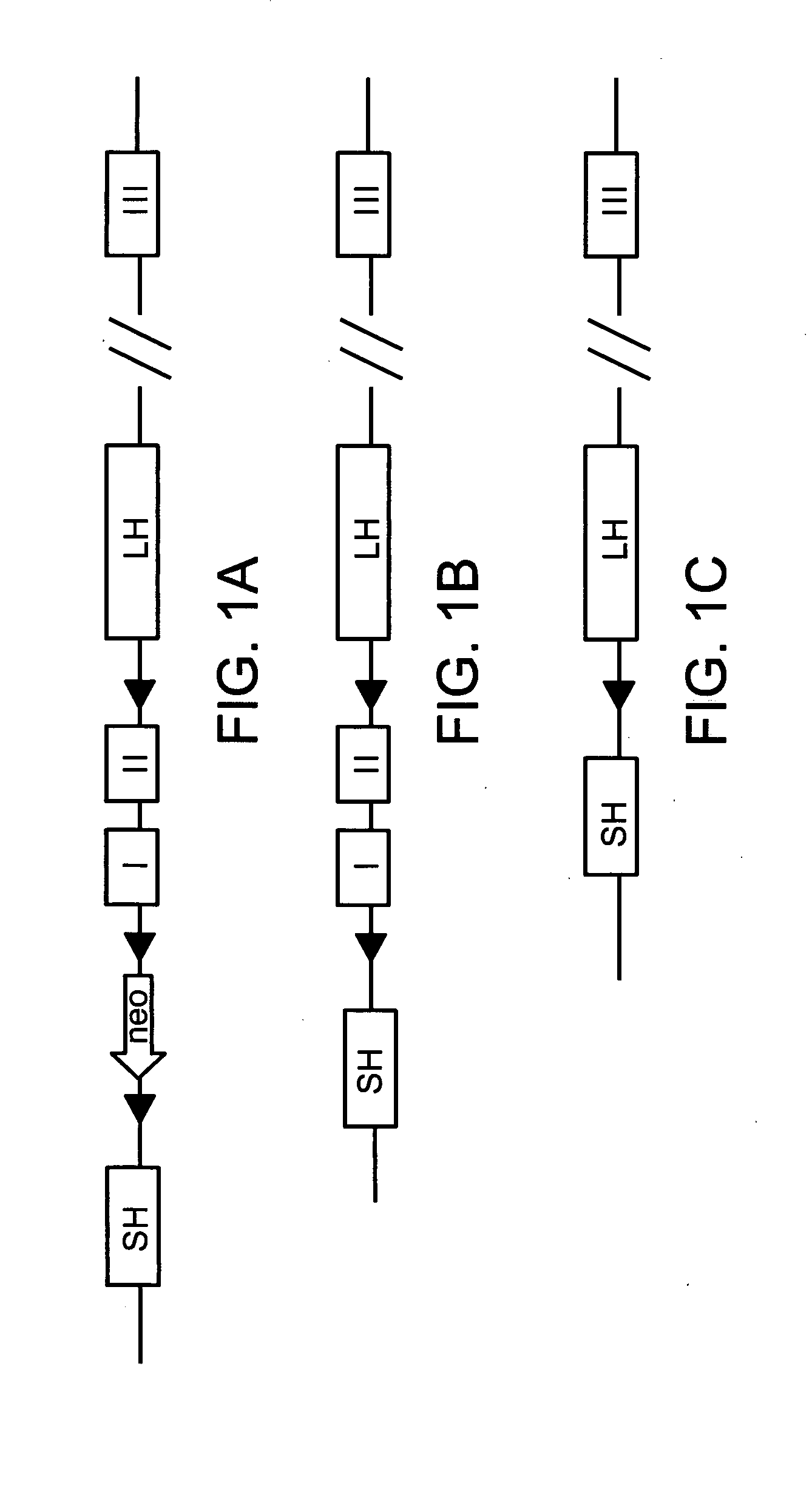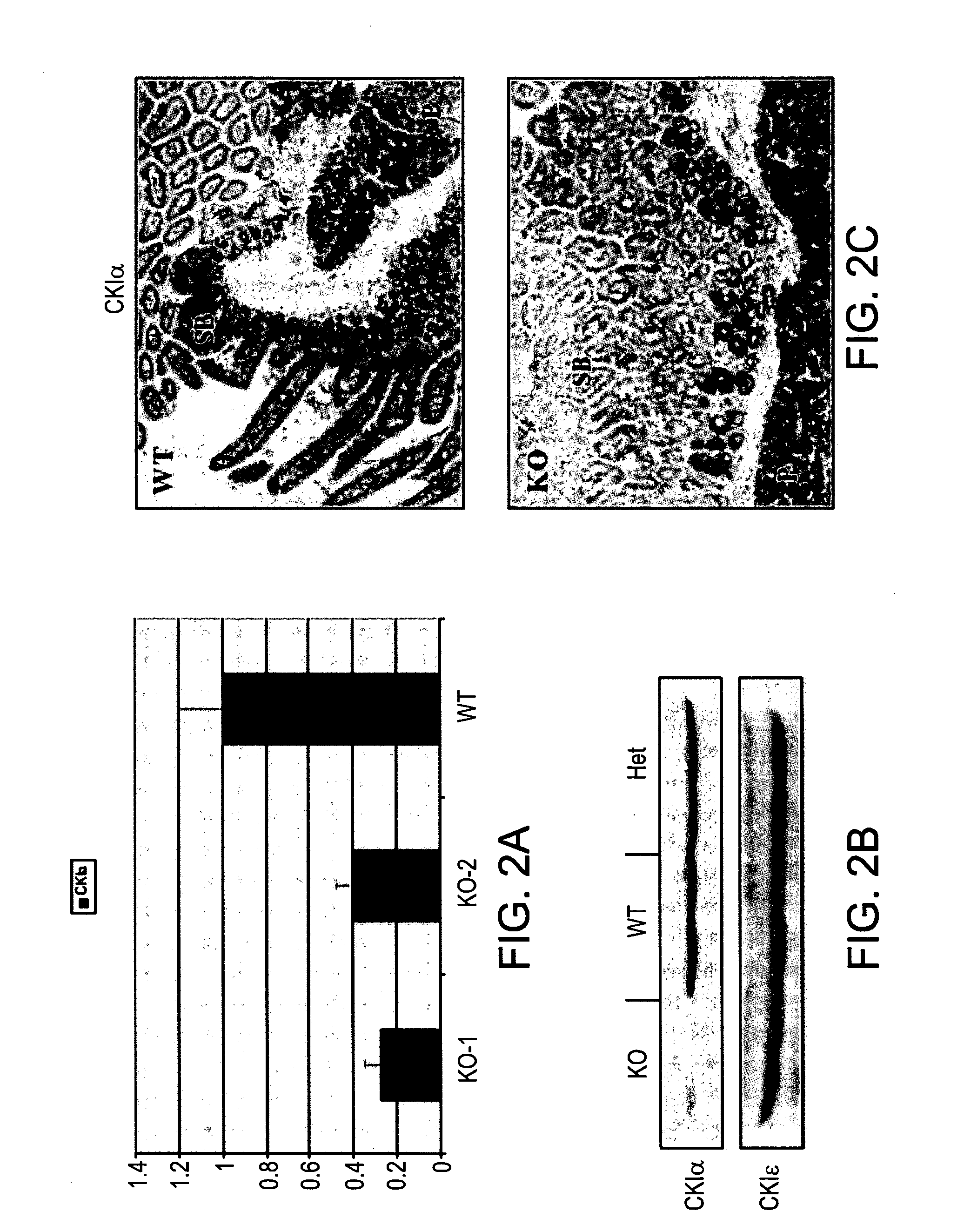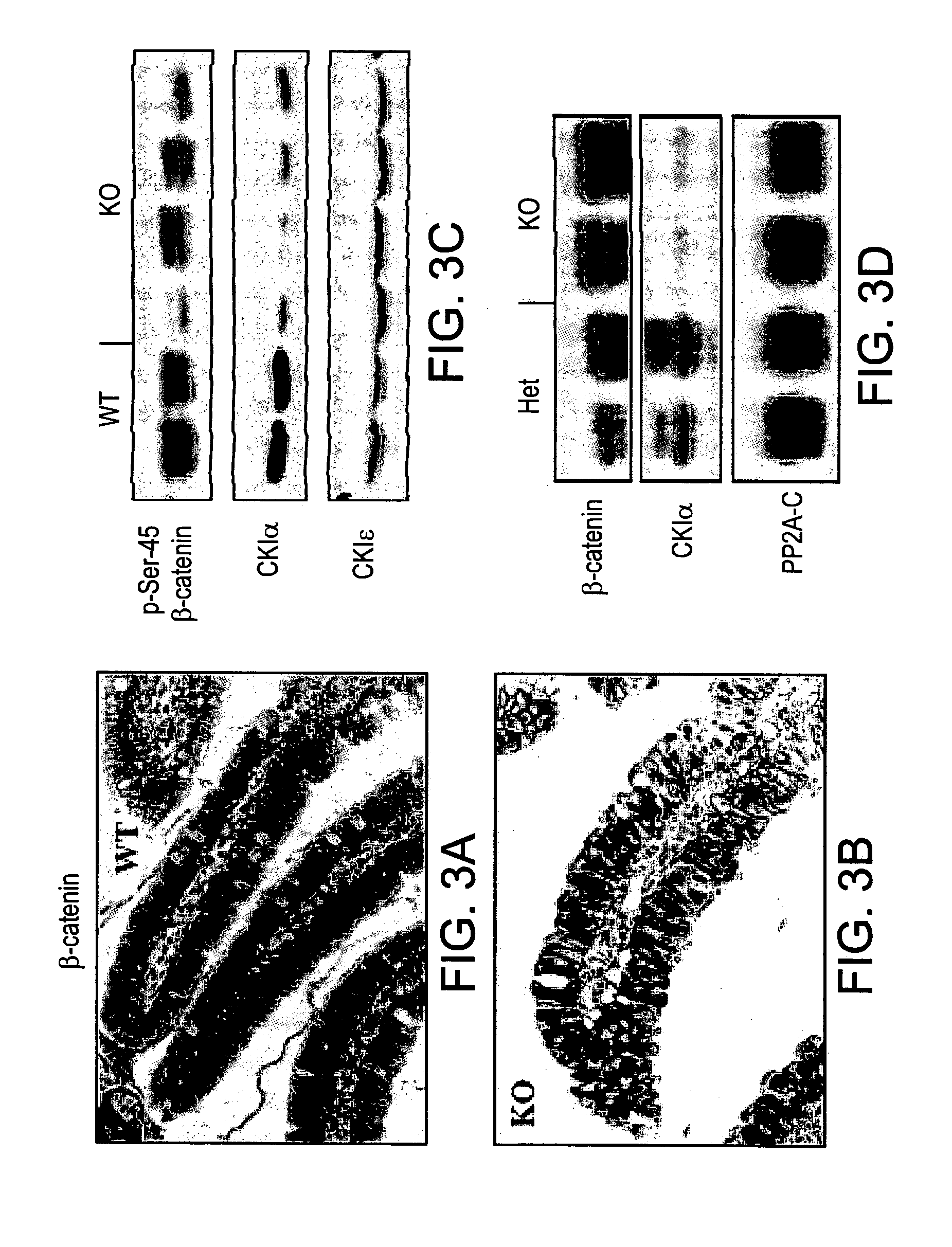Methods of killing cells and use of same in prevention and treatment of cancer
a technology applied in the field of killing cells and cancer prevention and treatment, can solve problems such as the accumulation of nuclear -catenin
- Summary
- Abstract
- Description
- Claims
- Application Information
AI Technical Summary
Benefits of technology
Problems solved by technology
Method used
Image
Examples
example 1
Generation of Conditional CKIα, CKIδ and CKIε Knockout Mice
[0200]The murine CKIα gene (Csnk1a1) is located on chromosome 18, and includes 10 exons. In order to eliminate kinase activity, and probably ablate the whole protein, the present inventors conditionally deleted the first two exons of the gene, a region that contains the ATP-binding site of the kinase. Therefore, CKIα vector was constructed, harboring a homologous fragment comprised of the targeted exons (1 and 2) and part of the untranslated region of CKIα gene, flanked with two LoxP sites (“foxed”). In addition, the vector includes two homologous fragments of the gene (long and short), and a Neomycin selection marker flanked with a third LoxP site (FIG. 1A). The targeting vector was electroporated into R1 embryonic stem (ES) cells (derived from 129 / SVJ mice), and G-418 resistant colonies were picked. DNA was extracted from resistant colonies and used as a template for PCR indicative of a homologous recombination event of th...
example 2
Induction of CKIα Knockout in the Gut
[0203]In order to obtain mice in which the CKIα gene is deleted specifically in the intestine, germ-line transmitted progeny were bred to hemizygous Villin-Cre-ERT2 mice, which express the Cre recombinase under the transcriptional control of the Villin promoter which is constitutively active in the gut epithelium. The Cre protein is fused to the hormone binding domain of the Estrogen Receptor (ER), which is mutated so that it can only be activated by Tamoxifen—an exogenic analog of estrogen. Systemic administration of Tamoxifen releases the The Cre-ERT2 fusion protein from sequestration in the cytoplasm whereby it enters the nucleus and excises the floxed DNA sequence thus creating a null allele only in the gut epithelium (FIG. 1C). Mice were mated to generate progeny that are both homozygous for the floxed CKIα allele and carry the Villin-CreER-T2 transgene. Control mice were (1) heterozygous floxed CKIα mice harboring Cre-ERT2 and (2) homozygou...
example 3
Activation of the Wnt / β-catenin Pathway in CKIα Knockout Mice
[0205]CKIα was shown to negatively regulate the Wnt / β-catenin pathway by priming the phosphorylation-degradation cascade of β-catenin, making it accessible for subsequent GSK3-mediated phosphorylation and βTrCP-mediated ubiquitination. The present inventors therefore stained for β-catenin in the gut and observed an accumulation of β-catenin in the nuclei of mutant villi cells (FIGS. 3A-B). Normally, nuclear β-catenin is only detected in the proliferative compartment which resides in the crypts, as seen in the control gut (not shown). In addition, analysis of phosphorylated Serine-45 of β-catenin in enterocytes showed a reduction in β-catenin phosphorylation at this CKIα-dependent residue (FIG. 3C), which led to stabilization of β-catenin (FIG. 3D).
[0206]In order to further characterize the Wnt-related phenotype, quantitative RT-PCR was performed to detect a possible up-regulation of Wnt target gene expression. Axin2, c-Myc...
PUM
 Login to View More
Login to View More Abstract
Description
Claims
Application Information
 Login to View More
Login to View More - R&D
- Intellectual Property
- Life Sciences
- Materials
- Tech Scout
- Unparalleled Data Quality
- Higher Quality Content
- 60% Fewer Hallucinations
Browse by: Latest US Patents, China's latest patents, Technical Efficacy Thesaurus, Application Domain, Technology Topic, Popular Technical Reports.
© 2025 PatSnap. All rights reserved.Legal|Privacy policy|Modern Slavery Act Transparency Statement|Sitemap|About US| Contact US: help@patsnap.com



